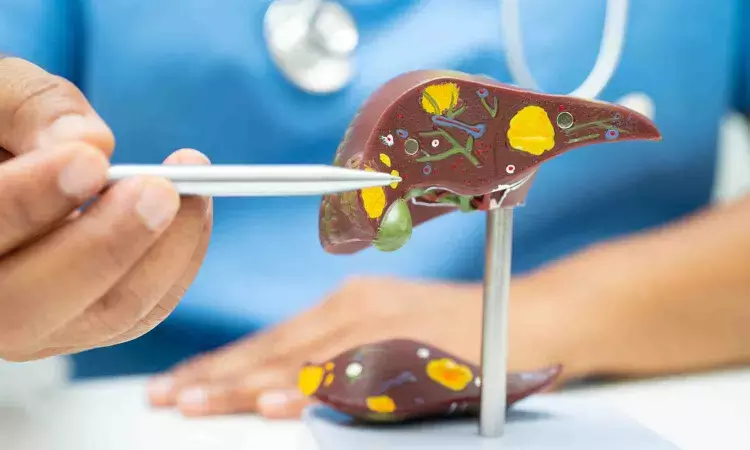- Home
- Medical news & Guidelines
- Anesthesiology
- Cardiology and CTVS
- Critical Care
- Dentistry
- Dermatology
- Diabetes and Endocrinology
- ENT
- Gastroenterology
- Medicine
- Nephrology
- Neurology
- Obstretics-Gynaecology
- Oncology
- Ophthalmology
- Orthopaedics
- Pediatrics-Neonatology
- Psychiatry
- Pulmonology
- Radiology
- Surgery
- Urology
- Laboratory Medicine
- Diet
- Nursing
- Paramedical
- Physiotherapy
- Health news
- Fact Check
- Bone Health Fact Check
- Brain Health Fact Check
- Cancer Related Fact Check
- Child Care Fact Check
- Dental and oral health fact check
- Diabetes and metabolic health fact check
- Diet and Nutrition Fact Check
- Eye and ENT Care Fact Check
- Fitness fact check
- Gut health fact check
- Heart health fact check
- Kidney health fact check
- Medical education fact check
- Men's health fact check
- Respiratory fact check
- Skin and hair care fact check
- Vaccine and Immunization fact check
- Women's health fact check
- AYUSH
- State News
- Andaman and Nicobar Islands
- Andhra Pradesh
- Arunachal Pradesh
- Assam
- Bihar
- Chandigarh
- Chattisgarh
- Dadra and Nagar Haveli
- Daman and Diu
- Delhi
- Goa
- Gujarat
- Haryana
- Himachal Pradesh
- Jammu & Kashmir
- Jharkhand
- Karnataka
- Kerala
- Ladakh
- Lakshadweep
- Madhya Pradesh
- Maharashtra
- Manipur
- Meghalaya
- Mizoram
- Nagaland
- Odisha
- Puducherry
- Punjab
- Rajasthan
- Sikkim
- Tamil Nadu
- Telangana
- Tripura
- Uttar Pradesh
- Uttrakhand
- West Bengal
- Medical Education
- Industry
Increasing eGDR levels reduces risk of liver fibrosis and MASLD: BMC Study

A new study published in the journal of BMC Endocrine Disorders showed that increasing estimated glucose disposal rate (eGDR) levels reduced the risk of liver fibrosis by up to 95% and metabolic dysfunction-associated steatotic liver disease (MASLD) by up to 87% when compared to the lowest eGDR levels.
MASLD is now the most common cause of chronic liver disease, with a global incidence of about 30% in adults. Type 2 diabetes, hypertension, obesity, dyslipidemia, and cardiovascular disease are all significantly correlated with MASLD, which has been identified as a metabolic disorder. There is proof that the development of MASLD is significantly influenced by insulin resistance (IR), which is also connected to the advancement of liver fibrosis.
Triglyceride glucose index (TyG index), estimated glucose disposal rate, and homeostasis model assessment-insulin resistance (HOMA-IR) are some of the noninvasive techniques that have been proposed by several researchers to measure IR. Thus, this study was to evaluate the relationship between eGDR and MASLD and liver fibrosis.
Nearly, 3,100 individuals from the 2017–2018 National Health and Nutrition Examination Surveys (NHANES) were included in this study. Binary logistic regression analysis was utilized to investigate the connection between eGDR and MASLD and liver fibrosis. The capacity of eGDR to detect MASLD was estimated using the receiver operating characteristic (ROC).
The participants' average age was 54.59 (17.29) years, and 49.26% of them were female. Liver fibrosis was seen in 11.15% of cases and MASLD in 62.19% of cases. With βs of -15.18 and -0.74 (all p < 0.01), respectively, eGDR was negatively correlated with the controlled attenuation parameter (CAP) and liver stiffness measurement (LSM) in the fully adjusted models.
With odds ratios (ORs) and 95% CIs of 0.53 (95% CI: 0.48-0.74) and 0.40 (95% CI: 0.28-0.57) (all p < 0.01), eGDR was negatively associated with MASLD and liver fibrosis. The eGDR's area under the curve (AUC) for detecting liver fibrosis and MASLD is 0.75 and 0.74, respectively.
Overall, easy, accurate, and affordable ways to identify MASLD are needed in clinical practice and epidemiological research. Regular blood tests can efficiently monitor eGDR, a biomarker that may be obtained through routine testing. Consequently, eGDR could be a useful method for the non-invasive diagnosis of MASLD patients.
Source:
Liu, W., Li, X., Chen, L., & Luo, X. (2025). The association between estimated glucose disposal rate and metabolic dysfunction-associated steatotic liver disease and liver fibrosis in US adults. BMC Endocrine Disorders, 25(1), 67. https://doi.org/10.1186/s12902-025-01891-7
Neuroscience Masters graduate
Jacinthlyn Sylvia, a Neuroscience Master's graduate from Chennai has worked extensively in deciphering the neurobiology of cognition and motor control in aging. She also has spread-out exposure to Neurosurgery from her Bachelor’s. She is currently involved in active Neuro-Oncology research. She is an upcoming neuroscientist with a fiery passion for writing. Her news cover at Medical Dialogues feature recent discoveries and updates from the healthcare and biomedical research fields. She can be reached at editorial@medicaldialogues.in
Dr Kamal Kant Kohli-MBBS, DTCD- a chest specialist with more than 30 years of practice and a flair for writing clinical articles, Dr Kamal Kant Kohli joined Medical Dialogues as a Chief Editor of Medical News. Besides writing articles, as an editor, he proofreads and verifies all the medical content published on Medical Dialogues including those coming from journals, studies,medical conferences,guidelines etc. Email: drkohli@medicaldialogues.in. Contact no. 011-43720751


